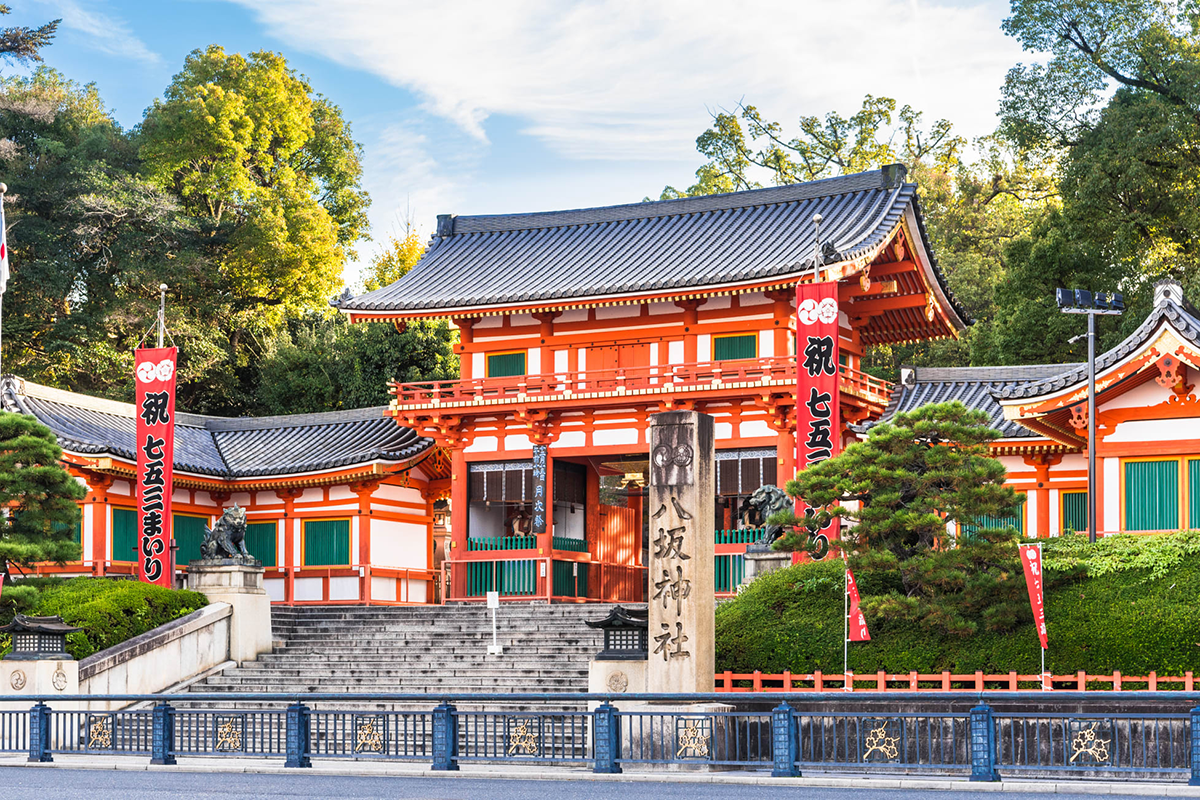Illuminating History and Tradition: Yasaka Shrine in Kyoto, Japan
In the heart of Kyoto, a city that seamlessly intertwines history with modernity, Yasaka Shrine stands as a beacon of tradition and culture. This sacred haven, whose roots trace back to 656 AD, weaves a tapestry of legend, resilience, and reverence that continues to captivate the hearts of those who wander its vermilion paths.
Legend has it that Yasaka Shrine was originally named Gion Shrine and was erected to quell a plague that swept through Kyoto. Devotees beseeched the gods for relief, and over time, the shrine was transformed into a symbol of hope and resilience. This storied history is but the beginning of the shrine’s allure.
Through centuries, Yasaka Shrine bore the brunt of natural calamities, fires, and reconstructions. The shrine as we see it today took its present form in 1654 after a major fire. Its enduring architectural beauty is characterized by vermilion-hued buildings adorned with intricate carvings and traditional Japanese lanterns. Stepping onto the shrine grounds feels like entering a different era where time stands still, and tradition thrives.
The centerpiece of Yasaka Shrine is its dedication to Susano-o no Mikoto, a Shinto deity renowned for protecting against malevolent spirits and diseases. Devotees and visitors alike gather here to seek the deity’s divine intervention in their lives, making this shrine an eternal guardian of the city’s wellbeing. This strong connection with protection and healing is deeply ingrained in the shrine’s atmosphere, making it a sanctuary of hope and faith.
Beyond its role as a guardian, Yasaka Shrine is also closely associated with the Gion Matsuri, one of Japan’s most famous festivals. The Gion Matsuri takes place every July, transforming the shrine into a vibrant hub of cultural festivities. Elaborate processions, dazzling floats, and spirited performances grace the streets, painting the city with an exuberant energy that is palpable in the air. The Gion Matsuri is an event that encapsulates the soul of Kyoto, a city that celebrates its rich heritage with grandeur and pageantry.
Visiting Yasaka Shrine is more than just a glimpse into history; it’s an opportunity to engage in timeless traditions. Visitors can partake in a range of rituals, each offering a deeper connection to the shrine’s spiritual legacy. Making a wish at the sacred tree is a cherished practice, a simple yet profound act that allows one’s hopes to be whispered to the heavens. The purification ceremonies cleanse the soul and prepare the heart to embrace the shrine’s blessings. And then, there are the omamori, talismans believed to bring good fortune, which visitors often carry with them as a constant reminder of the shrine’s protective spirit.
However, the allure of Yasaka Shrine doesn’t end with its historical and spiritual significance. The Higashiyama Hanatouro, an annual festival of lights held every March, turns the shrine and its surroundings into a mesmerizing dreamscape. Thousands of lanterns grace the shrine’s path, casting an enchanting glow that brings the ancient architecture and natural beauty to life. This festival transports visitors to a realm of ethereal beauty, where time seems to stand still, and the past and present harmonize in perfect union.
In every season, Yasaka Shrine offers a unique experience, whether you’re seeking tranquility amidst the cherry blossoms in spring or participating in lively festivals during the summer and autumn. The shrine beckons travelers to immerse themselves in Kyoto’s rich cultural tapestry.
Yasaka Shrine is a testament to Kyoto’s enduring spirit, where history and tradition converge to create an unbreakable bond between the past and the present. For those who venture to this timeless sanctuary, a deeper understanding of Japan’s cultural heritage and spiritual essence awaits, along with the promise of renewal and protection that has drawn pilgrims and wanderers for centuries.
